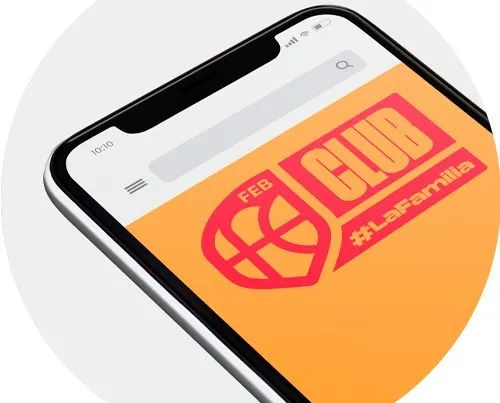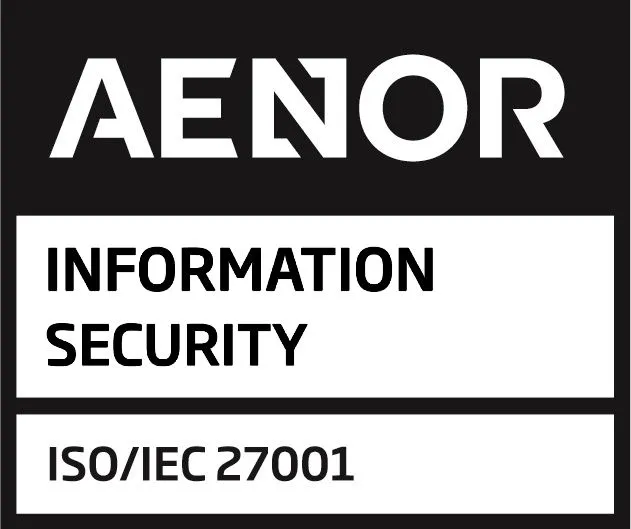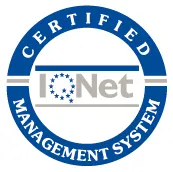
Does your company have internal communication channels… but no one reads or uses them? You’re not alone. Many organizations fail, not because of bad intentions, but because they lack a well-structured internal communication plan tailored to their reality.
Table of Contents
A good internal communication plan doesn’t happen by chance: it’s designed strategically, implemented thoughtfully, and reviewed regularly. This hands-on guide will show you how to build one from scratch—with real examples, current trends, and useful tips for different work models, whether your team is onsite, hybrid, remote, or frontline.
And if you already have something in place, much of what we cover here can help you evaluate and improve your current plan. Let’s dive in.
What is an internal communication plan and why is it crucial for your company?
An internal communication plan is more than just sending mass emails or posting updates on the employee portal. It’s a strategic roadmap that defines what gets communicated, how, to whom, when, and through which channels. In other words, it structures and professionalizes how information flows within your organization.
Its main goal is to ensure that everyone—whether in the office, remote, hybrid, or on the frontline—is well-informed, aligned with the company’s values, and engaged with shared objectives.
When done right, this plan becomes a cornerstone of corporate culture and a powerful tool for improving the employee experience.
A practical example:
Imagine a retail chain with over 300 employees, most working in physical stores. The only communication channel from HQ is email… but employees don’t have regular access to it during shifts. The result? No one knows about new product launches, there’s confusion around promotions, and employees feel disconnected.
This could be avoided with an internal communication plan that includes:
- Segmentation of internal audiences (store staff, admin, logistics, etc.)
- Clear goals (improve coordination and sense of belonging)
- The most effective channels for each group: shift-start briefings, a mobile app, digital screens in break areas
- Defined key messages, responsible parties, and communication frequency
- Pulse surveys and interaction tracking
Implementing these practices can greatly improve team coordination, reduce operational errors, increase campaign engagement, and strengthen company culture.
Benefits of a solid internal communication plan
- A strong, coherent company culture: Values aren’t just written—they’re lived. Consistent, well-directed communication reinforces those values daily.
- Better talent retention: Employees who feel heard and informed are more connected to the company and more likely to stay.
- Strategic alignment: When everyone understands their role in the bigger picture, the team moves faster and with more clarity.
- Conflict and rumor prevention: Transparency reduces misinformation and builds trust.
HR structure and control: A solid communication plan simplifies internal management and supports HR efforts.
What happens when there is no plan?
Still not convinced? Here’s what can go wrong without a communication plan:
Misunderstandings and misalignment between teams
Without a clear system, each team or manager communicates “in their own way.” We can’t expect everyone to share the same common sense. This leads to contradictory messages, lost focus, and team frustration.
Internal conflicts due to misinformation or assumptions
When communication is lacking or delayed, people fill in the gaps with rumors, misunderstandings, or mistrust. This breeds a toxic environment where gossip replaces official channels.
Wasted efforts on misunderstood or unnoticed initiatives
Imagine launching a new benefits policy or employer branding campaign—only for employees to not understand it, know how to engage, or even notice. Poor communication reduces the impact of even the best projects.
Poor work climate and increased turnover
People don’t leave just for money—they leave when they feel unheard, undervalued, or disconnected from the company’s purpose. Poor internal communication signals indifference and a disconnected culture.
Greater disconnect between HQ and frontline staff
In distributed organizations—like stores, factories, or remote teams—physical distance can become emotional distance without the right strategies. This limits motivation, innovation, and the sense of belonging.
Creating a communication plan is not optional—it’s a strategic decision that directly impacts business results, productivity, and internal reputation.
Before you begin: define your internal communication strategy
One of the most common mistakes is jumping into “sending more messages” without a clear strategy. If you don’t know who you’re talking to, what you want to achieve, and how you’ll measure it, even the best tools won’t help.
A good strategy is the foundation that transforms communication into a real lever for change. Start by answering these key questions:
Where are you now? Run a realistic diagnosis
- What channels are currently in use, and how do employees rate them?
- What types of messages are frequently shared? Are important topics missing?
- Are there differences in communication across departments or countries?
- Do managers act as communication enablers or blockers?
Use short surveys or focus groups across diverse profiles. With internal communication platforms like Vip Connect, you can easily launch internal surveys or climate check-ins.
What do you want to achieve? Set SMART goals
Avoid vague goals like “improve internal communication.” Instead, aim for specific, measurable outcomes:
- “Increase internal newsletter open rates from 30% to 60% in three months.”
- “Improve transparency perception by 25% among operations teams.”
- “Cut lack of awareness about internal benefits by 50% in six months.”
Pre- and post-campaign surveys help track and prove impact.
Want to design effective employee surveys? Find out how Vip Connect can help you customise them and optimise your employees’ experience.
Who are you talking to? Segment your internal audience
Not all employees have the same needs or communication habits. Consider:
- Roles and schedules (office vs. factory floor)
- Digital access levels (email, intranet, mobile apps)
The more personalized the message and channel, the better the results.
What culture do you want to promote?
Communication reflects company culture. Do you want a more participative, transparent, or agile organization? Align your communication to reinforce that culture.
How will you know you’re making progress?
Define how you’ll measure success from the start:
- KPIs: engagement, survey participation, channel usage
- Qualitative feedback
- Climate assessments
Platforms like Vip Connect help you centralize communication and measure impact.
How to build your internal communication plan step by step
You’ve defined your strategy. You know your audience and goals, and have a realistic view of your current state. Now it’s time to act.
1. Run a diagnosis
- What channels are being used?
- What messages circulate and how often?
- How is communication perceived across regions or teams?
- What barriers exist (tech, time, hierarchy)?
Tip:
- Don’t rely only on management’s perception. Talk to frontline teams.
- Don’t overestimate email—many employees ignore messages that don’t feel relevant.
2. Define clear, measurable goals aligned with the business
These should be tactical goals like:“Raise newsletter open rate from 40% to 70% in 3 months.”
3. Segment your audience and personalize messages
Now it’s time to act on the audience segmentation you defined earlier.
Tip:
- One-size-fits-all messaging often leads to disinterest.
- If people don’t understand the “why,” they’ll ignore it.
- Adapt the tone and format—some prefer text, others videos or infographics.
4. Choose the right channels and tools
It’s not about having many channels—it’s about using the right one for each message. Map all your channels and assign use cases.
Tip:
- Don’t overwhelm people with too many platforms or notifications.
Consider shifts and real reading availability. - Set clear rules (e.g., urgent = app; strategic = meetings).
5. Create an internal editorial calendar
Planning prevents last-minute rushes and long silences. It also brings calm to HR’s daily routine. Include:
- Message types (strategy, operations, wellbeing, recognition, onboarding)
- Frequency
- Message owner
- Channel
Tip:
- Remember that not everything needs the same urgency.
- Leave space for spontaneous news.
- Share the calendar with managers so they can reinforce key messages.
- Group low-priority updates to avoid notification fatigue.
6. Define metrics to measure and adjust
You can’t improve what you don’t measure. Use:
- Email/app open rates
- Average content read time
- Survey or initiative participation
- Communication satisfaction ratings
- Observable culture/process changes (e.g., fewer errors)
Tip:
- Collect data early and review monthly or quarterly. Internal communication is a living process.
Creating a solid plan is like building a house: if the foundations (strategy, segmentation, objectives) are poorly laid, you will notice it right away. But if you get this process right, your messages will be heard, your teams will be aligned and your corporate culture will be strengthened with every communication.
Adapting your plan to your company profile
Not all organizations are alike. Here’s how to tailor your plan:
Retail & Customer Service
Focus: Campaigns, procedures, and customer experience alignment.
What works:
- Visual, agile formats: short videos, gifs, infographics
- Shift-start briefings and digital screens in rest areas
- Mobile apps with push notifications
Avoid:
- Long emails, inaccessible PDFs
- Comms only reaching managers
Industry, Logistics & Production
Focus: Safety, shift coordination, connection with floor teams.
What works:
- Physical boards, QR codes
- Quick shift-start meetings
- Tools like Vip Connect with push notifications
Avoid:
- Overreliance on digital
- After-hours messaging or jargon-heavy content
Tech & Digital Environments
Focus: Combating info overload and fragmentation.
What works:
- Unified messaging via collaboration platforms
- Role-filtered newsletters
- Two-way comms and regular feedback
Avoid:
- “Spray and pray” announcements
- Impersonal, robotic messages
Corporate Services / Traditional Companies
Focus: Modernizing formal but outdated channels.
What works:
- Channel audits
- Internal surveys
- Gamified content and visible recognition
- Collaborative content spaces
Avoid:
- Long, dusty intranet docs
- One-way top-down comms
Fully Remote Teams
Focus: Combatting isolation, async overload, emotional disconnect.
What works:
- Clear comms routines (check-ins, virtual town halls)
- Social channels (celebrations, wins, events)
- Contextual, human video updates
Frontline / Blue Collar
Focus: Short, simple, impactful communication.
What works:
- Max 2–3 sentence messages
- Easy access to mobile tools
- Integration of communication into daily routines (meetings, start of shift, posters)
- Integrated communication in daily routines
Key metric: Was the message read, understood, and did it spark action?
Adapting your plan shows respect and empathy. The more relevant and contextualized the communication, the easier it is to build an aligned, connected culture.
Do You Already Have Internal Practices? Here’s How to Review and Improve Them
Implementing internal communication actions doesn’t automatically mean you’re communicating well. Many companies already have newsletters, monthly meetings, or Teams groups… but the results don’t follow: low engagement, misinformation, disconnect between departments, or simply apathy.
Reviewing and improving your current system isn’t a “luxury”—it’s a necessity if you want your communication to truly connect with people, align with the culture you’re trying to build, and help achieve business goals.
Here’s how to carry out that review in an organized and practical way:
Step 1: Conduct an Honest Diagnosis of Your Current System
This is the moment to pause and observe. Without a clear snapshot, any improvement will just be a patch. Evaluate your channels, content, team perceptions, and the role leaders play in communication.
Key questions for your diagnosis:
- What channels are you using and what are their actual usage or engagement rates?
- What messages are being communicated most frequently? Are they aligned with what truly matters?
- Who is doing the communicating (HR, Leadership, Managers…)? And who should be communicating more?
- Do employees feel well-informed and have easy access to information?
- Is two-way communication encouraged, or are messages simply being “broadcast”?
- What is the satisfaction level with the current internal communication?
- Are there underserved groups (due to location, language, contract type…)?
- What topics do employees want to know more about?
Tip:
Complement hard data (open rates, clicks, etc.) with qualitative feedback: short interviews, focus groups, or perception surveys. The Vip Connect tool allows you to easily create these types of surveys and gather real insights within a few days.
Step 2: Evaluate the Real Impact of Your Actions
A communication action without impact is just another task. Review whether messages are driving behavior, understanding, and connection—or just going unnoticed.
Things to analyze:
- Which content generates the most interaction? And which is ignored?
- Has any tangible change resulted from a specific campaign or message?
- Do teams remember important messages after a few days?
- Are team leaders reinforcing messages or acting as “filters”?
- Is there consistency between what’s communicated and what’s actually experienced?
Common Mistakes:
- Confusing quantity with impact: more messages ≠ more effectiveness.
- Failing to follow up: communicating once and assuming it’s understood.
- Using the same channels for everything, without segmenting by audience or timing.
Tip:
Map out all communication actions from the past three months and assign an estimated impact level. If you can’t measure it, it’s time to redesign your approach.
Step 3: Identify Key Moments and Messages to Adjust
Not everything needs the same level of communication, but some moments make or break the experience. These are high-emotion or sensitive moments—pay special attention here.
Examples of key moments:
- Changes in leadership or organizational structure
- Implementation of new policies (remote work, schedules, benefits)
- Internal campaigns (well-being, sustainability, culture)
- Critical processes like onboarding, evaluations, training
- Internal or external crises impacting team morale
- Social moments: celebrations, milestones, acknowledgments, team achievements
Keep in mind:
- In these cases, how you say it matters just as much as what you say.
- Lack of communication or poorly handled messages generate rumors, anxiety, or emotional disconnect.
- It’s better to “over-explain” than leave employees guessing.
Tip:
Create communication kits for these moments: a base message template, FAQs, responsible people, suggested formats. That way you can react quickly without improvising poorly.
Step 4: Adjust Tone, Channels, Formats, and Frequency
Many plans fail not because of lack of content, but because that content isn’t adapted to the reality of the audience. Sometimes changing the tone or channel has more impact than doubling the frequency.
Elements to review and adjust:
- Tone: Are you being too formal? Can you adopt a more friendly or visual language?
- Channels: Are you using the right ones for each profile? Have you considered trying new ones like podcasts, short videos, or mobile apps?
- Frequency: Are you over-communicating and causing fatigue? Or under-communicating so much that people don’t expect your messages?
- Format: Are you only using text? Could you vary with graphics, videos, short audios, or testimonials?
- Interaction: Are you inviting responses, comments, or participation?
Inspiring Example:
One company replaced its 10-block monthly newsletter with a series of daily micro-content (“1 Minute a Day”) sent via app. Not only did the open rate improve, but it also revealed which topics were most engaging.
Tip:
Create an internal “editorial guide” to ensure consistency without being rigid, and experiment in short cycles to test new approaches.
Step 5: Implement a Continuous Improvement System
Your communication plan shouldn’t be a static document reviewed once a year. It’s a living tool that evolves with your people and your company.
What you can do:
- Regular reviews: Set quarterly cycles to measure KPIs and qualitative perception.
- Internal communication committee: Select internal ambassadors (from different departments, levels, and locations) who act as sensors and amplifiers.
- Pilot formats: Before launching something company-wide, test a new channel or campaign with a small group.
- Ongoing training: Train managers and leaders as communicators, not just messengers of instructions.
Tip:
Apply a continuous improvement methodology (e.g., PDCA: Plan, Do, Check, Act). Communicating better isn’t a campaign—it’s a culture.
Closing: Review, Learn, and Reconnect
Internal communication practices are not static. What worked a year ago might have lost its relevance, and what looked great on paper may not resonate in everyday life
But that’s the opportunity: reviewing doesn’t mean failing—it means being committed to improvement.
And when you dare to question what you’re doing and listen to what people need, communication becomes more than just messages—it turns into a real tool for culture, motivation, and belonging.
An internal communication plan is a competitive advantage
Now more than ever, an internal communication isn’t a nice-to-have—it’s a strategic necessity. It directly impacts employee engagement, retention, productivity, and culture.
So the real question is: will you keep communicating “the usual way”… or take the leap into a more modern, human, and effective approach?
Once your strategy and plan are in place, the next step is implementation. If you want to roll this out quickly and smoothly, consider a communication platform like Vip Connect, which lets you:
- Reach all your teams, regardless of location or tech access
- Measure what works (and what doesn’t)
- Create communication experiences—not just messages
- Build surveys, suggestion boxes, manage trainings and activities
- Transform culture from the inside, using data and real participation
With Vip Connect, you don’t just share info—you create communication experiences that strengthen your culture and connect people to a shared purpose.
New to Vip District? Contact us and find out what our platform has to offer!









